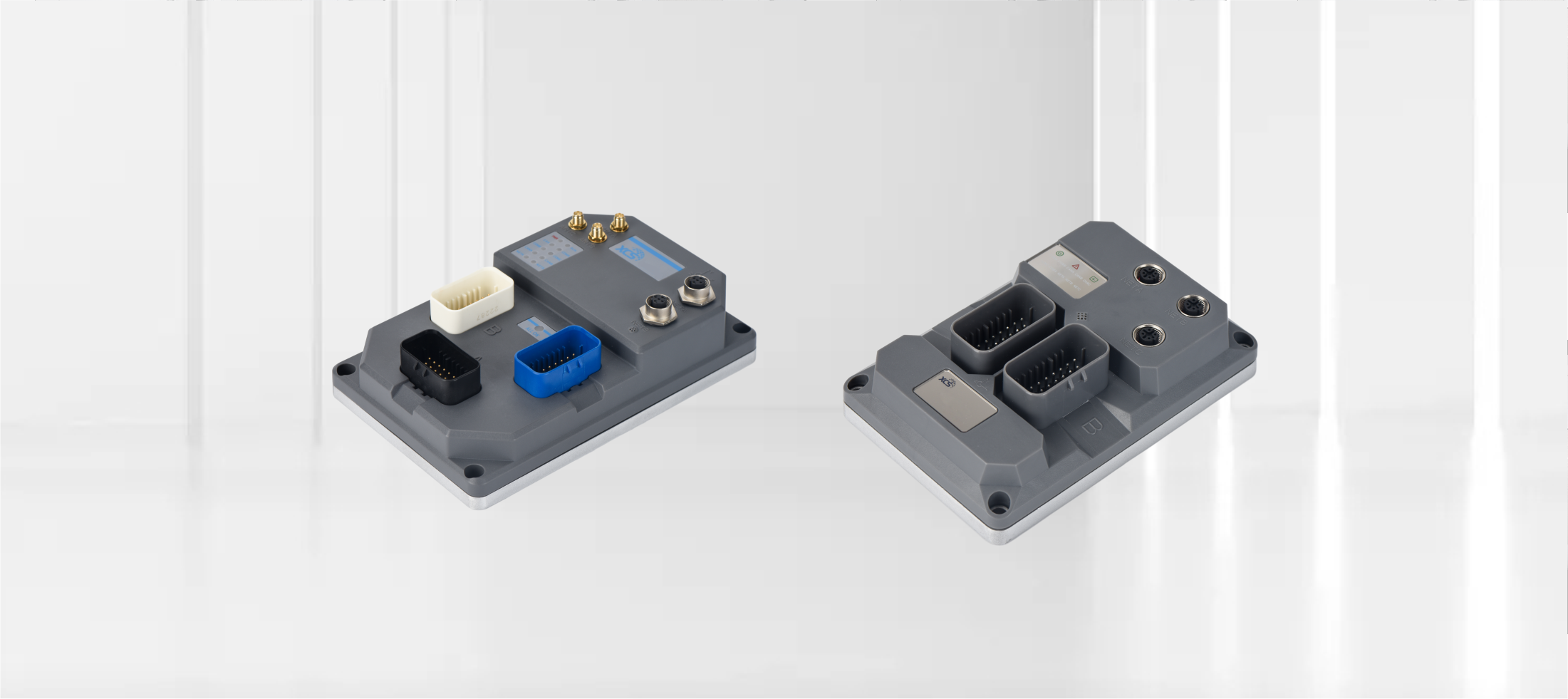As the demand for automation in industries continues to rise, Automated Guided Vehicles (AGVs) and Autonomous Mobile Robots (AMRs) have become indispensable tools in modern warehouse and logistics management. At the core of these intelligent systems lies the AGV controller, a critical component that governs the vehicle's movement, navigation, and integration with other systems. Our AGV controller is specifically designed to meet the demands of these applications, ensuring efficient, reliable, and precise control for various types of AGVs, mobile robots, and forklift AGVs. In this article, we explore the key features and advantages of our AGV controller and its role in optimizing industrial automation.
Key Features of Our AGV/AMR Controller
Controller
1. High-Performance Processor for Real-Time Data Processing
Our AGV controller is equipped with a high-performance processor capable of real-time data processing. This capability ensures smooth operation even in fast-paced environments where precise control and quick responses are crucial. Whether handling large volumes of data from multiple sensors or managing complex tasks simultaneously, the controller provides the computational power needed for efficient operation.
2. Support for Multiple Navigation Methods
Navigation is one of the most critical aspects of AGV performance. Our AGV controller supports a range of navigation methods, including:
- Laser Navigation: Utilizes lasers to map the environment and navigate accurately, suitable for dynamic and unpredictable environments.
- Vision Navigation: Leverages cameras and advanced image processing algorithms to detect objects and paths, ideal for environments with varied terrain and obstacles.
- Magnetic Tape Navigation: A reliable method for guiding AGVs along predefined paths using magnetic tape, commonly used in more structured or traditional warehouse setups.
This versatility ensures that the AGV can adapt to a wide range of operational conditions, maintaining both safety and efficiency.
3. Intelligent Obstacle Avoidance Algorithm
Safety is paramount when it comes to AGVs operating in environments with human workers and other machinery. Our controller is equipped with an intelligent obstacle avoidance algorithm, which allows the AGV to detect and avoid obstacles in real time. By continuously scanning its surroundings, the AGV can safely navigate complex environments without the risk of collisions, enhancing workplace safety and ensuring uninterrupted workflows.
4. Multiple Communication Interfaces for Seamless Integration
For AGVs to function optimally within a larger system, they must be able to communicate efficiently with other devices and control systems. Our AGV controller offers a variety of communication interfaces, including:
- CAN (Controller Area Network): A robust protocol widely used in industrial applications for real-time control and data exchange.
- RS232: A standard communication protocol for serial communication between the controller and other hardware.
- Ethernet: High-speed data transmission for integration with networks, making it easier to connect AGVs with cloud systems and warehouse management platforms.
These communication options provide flexibility and simplify the integration of AGVs into existing infrastructure, ensuring that they can communicate effectively with other devices, sensors, and systems in the warehouse.
5. Cloud Monitoring and Remote Management
One of the most significant advantages of our AGV controller is its cloud monitoring capabilities. With this feature, users can remotely monitor the operating status of AGVs, track their progress, and manage task scheduling in real time. Cloud-based control not only reduces the need for on-site supervision but also provides valuable data for performance analysis and preventive maintenance. This level of visibility is crucial for enterprises looking to optimize their operations, reduce downtime, and improve the overall efficiency of their logistics processes.
The Role of AGV/AMR Controllers in Optimizing Warehouse Management
AGV controllers play a pivotal role in enabling AGVs to perform their tasks efficiently and reliably. By ensuring that AGVs can navigate complex environments, avoid obstacles, and communicate effectively with other systems, the controller serves as the brain of the AGV, orchestrating its movements and actions.
In modern warehouses, where rapid order fulfillment and efficient inventory management are critical, AGVs equipped with advanced controllers can significantly enhance operational efficiency. These vehicles can be deployed to handle tasks such as transporting goods, replenishing stock, and handling inventory, all while being monitored and managed remotely via cloud systems. This level of automation not only reduces labor costs but also minimizes errors and improves safety.
For industries aiming to transition to smart, automated operations, the right AGV controller is essential. Our controller is designed to offer the flexibility, reliability, and performance needed to help enterprises achieve their goals of intelligent automation and optimize their logistics workflows.
Conclusion
In conclusion, our AGV controller provides an ideal solution for enhancing the performance of AGVs and mobile robots in industrial and warehouse environments. With its high-performance processor, support for multiple navigation methods, intelligent obstacle avoidance, versatile communication interfaces, and cloud monitoring capabilities, it ensures safe, precise, and efficient control. As the role of AGVs in modern logistics continues to grow, having a robust controller is key to achieving operational excellence and driving smart upgrades in warehouses. Our controller is positioned to meet these demands, helping businesses optimize their processes and enhance productivity in the age of automation.



Share:
DC Servo Motor Control Systems Principles and Applications
Application and Selection of Servo Motors in AGV